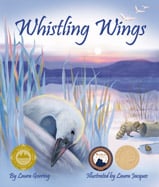Alignment to Standards for CT

| Grade | Number | Standard |
|---|---|---|
| 1 | SC:1.2 | Living things have different structures and behaviors that allow them to meet their basic needs. |
| 1 | SC:1.2.a/b5 | Compare and contrast information about animals and plants found in fiction and nonfiction (FCM) sources. |
| 1 | SC:1.2.a2 | Identify structures and behaviors used by mammals, birds, amphibians, reptiles, fish and insects to move around, breathe and obtain food and water (e.g., legs/wings/fins, gills/lungs, claws/fingers, etc.) |
| 1 | SC:1.3.a | Some organisms undergo metamorphosis during their life cycles; other organisms grow and change, but their basic form stays essentially the same. |
| 1 | SC:1.3.a1 | Explain that living things experience a life cycle during which they undergo a predictable sequence of changes from birth, growth, reproduction and death. |
| 1 | SC:1.3.a2 | Distinguish between animals that are born alive (e.g., humans, dogs, cows) and those that hatch from eggs (e.g., chickens, sea turtles, crocodiles). |
| 3 | SC:3.2.a | Plants and animals have structures and behaviors that help them survive in different environments. |
| 3 | SC:3.2.a1 | Compare and contrast the external features and behaviors that enable different animals and plants to get food, water and sunlight; find mates; and be protected in specific land and water habitats. |
| 3 | SC:3.2.a2 | behaviors such as hibernation, dormancy and migration give species advantages for surviving unfavorable environmental conditions. |
| 3 | SC:3.2.a4 | Evaluate whether an adaptation gives a plant or animal a survival advantage in a given environment. |
| 4 | SC:4.2.a5 | Distinguish between naturally occurring changes in ecosystems and those caused by human activity. |
| K | SC:K.1.a3 | Classify organisms or objects by one and two observable properties and explain the rule used for sorting (e.g., size, color, shape, texture or flexibility). |
| K | SC:K.1.a6 | Count, order and sort objects by their observable properties.6. |
| K | SC:K.2 | Many different kinds of living things inhabit the Earth. |
| K | SC:K.2.a4 | similarities and differences between plants and animals. |
| K | SC:K.3 | Weather conditions vary daily and seasonally. |
| K | SC:K.3.a4 | Write, speak or draw ways that weather influences humans, other animals and plants. |
| Pre-K | SC:PK.2 | Many different kinds of living things inhabit the Earth. |
| Pre-K | SC:PK.2.a.3 | distinguish between the characteristics of plants and animals. |
| Pre-K | SC:PK.3 | Weather conditions vary daily and seasonally. |
| Pre-K | SC:PK.3.a.3 | Identify the season that corresponds with observable conditions (e.g., falling leaves, snow vs. rain, buds on trees or greener grass). |